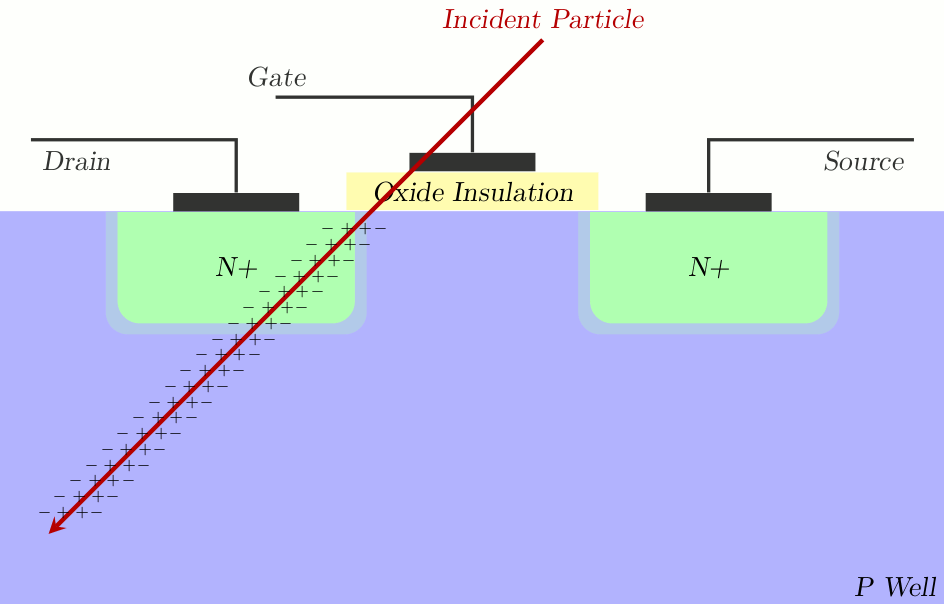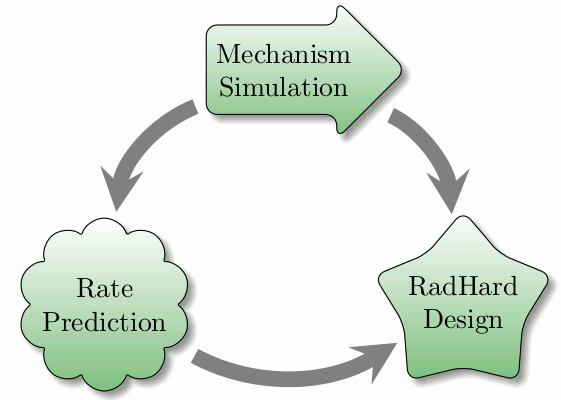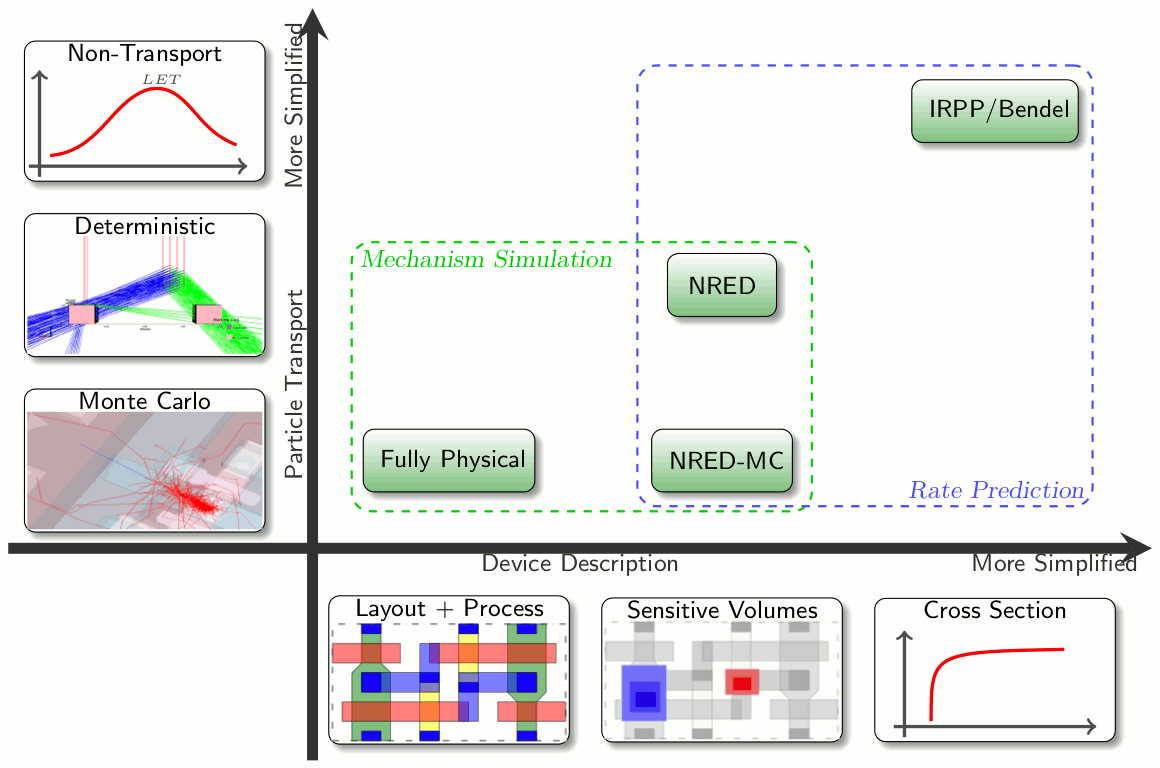Single Event Effects
A Single Event Effect (SEE) results from a single energetic particle. When the particle strikes a sensitive node in a semi-conductor device, the ionization by the particle might produce a current pulse inside the device, which might cause soft or hard errors in logic/state. Commonly SEEs include single event upset (SEU), single event latch-up (SEL), single event burn-out (SEB), and single event transient (SET) etc. SEEs may happen to electronic devices in these environments:
- space (caused by space radiation)
- air-plane (caused by atmospheric neutron)
- close to nuclear reactor (caused by reaction neutron)
- everywhere (IF caused by natural decay radiation in the materials of devices)

What You can Do with Cogenda
Cogenda has considerable experience in SEE related problems, and provides comprehensive solutions. What you can do with Cogenda includes:

- Analyzing SEE through mechanism simulation
- Predicting SEE rate on space orbits
- SEE hardening by design
Among which, mechanism simulation is the basic part of the other two. Through mechanism simulation, especially fully physical simulation, one can have a detailed understanding of SEE processes occurred in certain devices at certain radiation circumstances. Cogenda developed corresponding pieces of software for simulating energetic particle transport and for simulating the device’s response, both in different ways. Thus Cogenda has a rich series of simulation solutions.
Based on complete understandings of SEE mechanism, Cogenda developed a series of prediction solutions. Beside the knowledge of some certain devices and their SEE mechanism, rate prediction requires another part of information: space radiation on its orbit. For this purpose, Cogenda developed a piece of dedicated software CRad, which deals with orbits and space radiation.
SEE hardening design is the ultimate aim of SEE research, it requires full understandings of SEE mechanism, some understandings of the radiation on orbits, and of course, certain knowledge of semiconductor and micro-electronics. Cogenda has first-hand experience of SEE hardening design and now provides standard cell library development services at 130nm – 65nm technology nodes at the wafer fab of the customers’ choices.
Overlaps between Mechanism Simulation and Rate Prediction
There are overlaps between mechanism simulation and rate prediction, or at least from the method point of view, as shown in figure below. To simulate or to predict a SEE process, there are two major steps which should be done:
- The energetic particle ionize the device. Commonly there are three dealing methods (from the most detailed to the least detailed):
- Monte Carlo Transport
- Deterministic Transport
- No Transport
- Device responds to the ionization. Commonly there are three methods of describing the device (from the most detailed to the least detailed):
- Mask Layout + Process Rules
- Sensitive Volumes (Artificially Defined Geometry Regions)
- Cross-section Curve (Obtained from Ground Test)
The combination of these methods results in some models, as shown in figure below. Among these models, depending on the levels of details being explored, some are for mechanism simulation, some are for rate prediction, some are for both.


